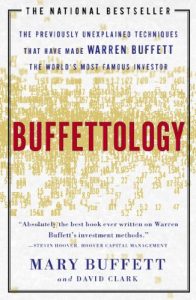Contents:
forex trading signals today BANKING RESOURCESLearn the foundation of Investment banking, financial modeling, valuations and more. Non Parallel Shifts – When the yield across different maturity horizons changes at a different level in both magnitude and direction. Invests in a bond of a certain maturity and does not readily switch from one maturity to another. A learning curve is a mathematical concept that graphically depicts how a process is improved over time due to learning and increased proficiency. She holds a Bachelor of Science in Finance degree from Bridgewater State University and helps develop content strategies for financial brands.


A humped curve is rare and typically indicates a slowing of economic growth. When the yield curve starts to shift toward an inverted shape, it is perceived as a leading indicator of an economic downturn. Such interest rate changes have historically reflected the market sentiment and expectations of the economy. A yield curve is a line that plots the interest rates, at a set point in time, of bonds having equal credit quality but differing maturity dates. Convexity is a measure of the relationship between bond prices and bond yields that shows how a bond’s duration changes with interest rates. Historically, inverted yield curves have been leading indicators of recessions.
By looking at the yield curve of bonds having equal credit quality but differing maturity dates, the slope of the curve will give you a good idea of the future interest rate changes and economic activity. Banks and other financial intermediaries borrow most of their funds by selling short-term deposits and lend by using long-term loans. The steeper the upward sloping curve is, the wider the difference between lending and borrowing rates, and the higher is their profit.
Yield Curves as an Indicator
The shape of the yield curve would then become inverted, with short-term rates higher than long-term rates . As we noted earlier, inverse yield curves forecast future recessions, signaling that short-term rates are expected to fall sharply. In fact, this signal has called the last seven out of seven recessions.

Note also that the steeper the slope of a yield curve, the faster interest rates rise as maturity lengthens. Liquidity Preference Theory states that since investors prefer being more liquid than less liquid and since short-term debt is more liquid than long-term debt, shorter-term bonds are preferred over longer-term bonds. Investors will then require a return premium to compensate them for holding the less liquid, longer term-bonds. For any change in interest rates, the price of long-term bonds will be impacted more that the price of short-term bonds.
Different institutions borrow money at different rates, depending on their creditworthiness. Over the next 92 months, the U.S. economy experienced its longest peace time expansion ever, with the spread remaining consistently above 1 percentage point for an average of 1.87 percentage points. In the summer of 1989, however, the spread briefly became negative—foreshadowing the mild recession that began in July 1990 and lasted only eight months. After the recession, the yield curve assumed its typical shape, with the spread remaining above 2 percentage points between March 1991 and December 1994—signaling a remote likelihood of another downturn. Moving into 1995, the yield curve began flattening, and by November of that year, the spread was only 0.41 percentage points.
An extreme case has occurred in some markets where the real rates on index-linked bonds have occasionally been recorded as negative. When interest rates are at relatively high levels, the inflation component is more significant so that price volatility is important. However, economic rationale suggests that the price of traded goods follows a lognormal distribution.
But, why do the shapes change? Three theories
Therefore, a long-term maturity will typically offer higher interest rates and have higher volatility. A fixed income Analyst may use the yield curve as a leading economic indicator, especially when it shifts to an inverted shape, which signals an economic downturn, as long-term returns are lower than short-term returns. It is an upward-sloping normal curve from left to right, indicating that yield increases with maturity. It is often observed when the economy grows at a normal pace without any major interruptions of available credit; e.g., 30-year bonds offer higher interest rates than 10-year bonds. As the word flat suggests, there is little difference in yield to maturity among shorter and longer-term bonds. A two-year bond could offer a yield of 6%, a five-year bond 6.1%, a 10-year bond 6%, and a 20-year bond 6.05%.
For example, the price of bonds will decrease when market interest rates increase. The yield curve allows fixed-income investors to compare similar Treasury investments with different maturity dates as a means to balance risk and reward. If yield curves are upward-sloping, that tends to indicate strong economic growth, measured by gross domestic product . If yield curves are inverted, however, that flags an economic slowdown or a recession. An upward-sloping yield curve indicates that long-term interest rates are generally higher than short-term interest rates.
- For any change in interest rates, the price of long-term bonds will be impacted more that the price of short-term bonds.
- The overall level of the yield curve also may shift up or down—at least in part because of changes in inflationary expectations over time.
- There is no single yield curve describing the cost of money for everybody.
- Invest in up to 20 stocks and ETFs by adding a single Kit to your portfolio.
However, technical factors, such as a flight to quality or global economic or currency situations, may cause an increase in demand for bonds on the long end of the yield curve, causing long-term rates to fall. Falling long-term rates in the presence of rising short-term rates is known as «Greenspan’s Conundrum». If short-term rates are low relative to their historical norm, investors are expecting that they will rise in the future so that the average of future expected short-term rates will be higher than the short-term rates today. This implies that the long-term rates will be higher than short-term rates, pricing in the expectations of future higher rates. When yield curves slope upward, which they do most of the time, we say that they are normal sloping. The graph of a normal-shaped curve shows us that long-term interest rates are higher than short-term ones.
Preferred Habitat Theory
Instead of the rate increasing as you move the maturity date further out, the yield actually decreases. Economists interpret this as a warning sign for a recession in the economy. The butterfly strategy combining a long bullet with a short barbell portfolio is commonly used to capitalize on expected yield curve shape changes. Yield curve slope measures the difference between the yield-to-maturity on a long-maturity bond and the yield-to-maturity on a shorter-maturity bond.
Credit Cycle Set to Deteriorate in 2023 – Investing.com
Credit Cycle Set to Deteriorate in 2023.
Posted: Wed, 22 Feb 2023 08:00:00 GMT [source]
Liquidity preference, which refers to the general tendency of investors to prefer short-term securities. A flattened yield curve might indicate economic weakening because interest rates and inflation will remain low for some time. Investors anticipate modest growth in the economy, and bank lending slows. Fixed-income portfolio managers can approximate actual and anticipated bond portfolio value changes using portfolio duration and convexity measures. Duration measures the linear relationship between bond prices and yield-to-maturity.
Understanding the relationship between the yield curve and the economy can help you choose suitable investments for your short- and long-term goals. Knowing how the yield curve relates to inflation might also help you prepare for rising costs and adjust your portfolio accordingly. Investors may know the yield curve as a visual depiction ofyieldsand bond maturities. At its most simple, the curve reflects yield differences among bonds of the same credit quality but different maturity dates.
A feature of convertible bonds that allow bondholders to change each bond into a stated number of shares of common stock. A paid individual, corporation, or commercial bank trust department that acts as the third party to a bond indenture and can take specified actions on behalf of the bondholders if the terms of the indenture are violated. A restrictive provision often included in a bond indenture, providing for the systematic retirement of bonds prior to their maturity. In a bond indenture, the stipulation that subsequent creditors agree to wait until all claims of the senior debt are satisfied.
https://forexbitcoin.info/ issuers have different risk profiles and therefore are of different quality, so they will have varied yield curves. But when it comes to default risk, Treasury bonds are seen as being as close to risk-free as an investor can get. Therefore, changes in the Treasury yield curve are almost entirely due to changes in market conditions, as opposed to changes in the creditworthiness of the bond issuer. That’s a big reason why the Treasury yield curve is so closely watched as a bellwether for market conditions.
Significance of slope and shape
There are many strategies and tactics available to investors looking for ways to beat the market during times of high inflation, or even a recession. The local expectations theory, liquidity preference theory, segmented markets theory, and preferred habitat theory provide traditional explanations for the shape of the yield curve. Receive-fixed swaps and long futures positions replicate this exposure in the derivatives market. A par yield curve is a stylized representation of yields-to-maturity available to investors at various maturities, which often does not consist of traded securities but must be extracted from available bond yields using a model.
New bonds are usually auctioned off, in which case the market directly sets the price, although sometimes they are sold to an investment bank or consortium of banks, which negotiates a price with the issuer. Either way, once bonds are issued to their first investors, they can be traded in the secondary market at different prices and yields — whatever the market will bear. Markets set bond yields via price negotiation between buyer and seller, the same way the stock market sets share prices. If the market price for a bond paying $1,020 next year is $1,000, the market yield for that bond is 2% (and if the price is below $1,000, the yield will be higher, while a higher price would result in a lower yield). Downward-sloping yield curves result from expectations of declining interest rates, lender preferences for longer-maturity loans, and greater supply of long-term loans than of short-term loans relative to demand.
- Yield curve risk exists for all bonds, although special attention is paid to the yield curve of U.S.
- For reasons explained below, bonds that pay back their investors sooner usually offer lower rates of return than bonds that pay off later — assuming all other factors are equal.
- If yield curves are upward-sloping, that tends to indicate strong economic growth, measured by gross domestic product .
- However, because the supply and demand of the two markets are independent, this theory fails to explain the observed fact that yields tend to move together (i.e., upward and downward shifts in the curve).
- Diversification strategies do not ensure a profit and do not protect against losses in declining markets.
While fixed-income index replication and bond portfolios that consider both an investor’s assets and liabilities were addressed earlier in the curriculum, we now turn our attention to active bond portfolio management. In contrast to a passive index strategy, active fixed-income management involves taking positions in primary risk factors that deviate from those of an index in order to generate excess return. Financial analysts who can successfully apply fixed-income concepts and tools to evaluate yield curve changes and position a portfolio based upon an interest rate view find this to be a valuable skill throughout their careers. Closely related to an investor’s preference for a market segment is the Preferred Habitat Theory. Investors are thought to have a preferred habitat or specific bond maturity where they wish to invest. To move or invest outside their preferred habitat, the investor must earn a higher expected return.